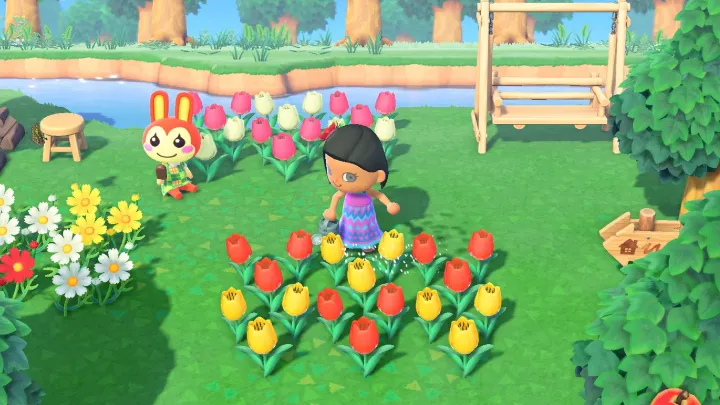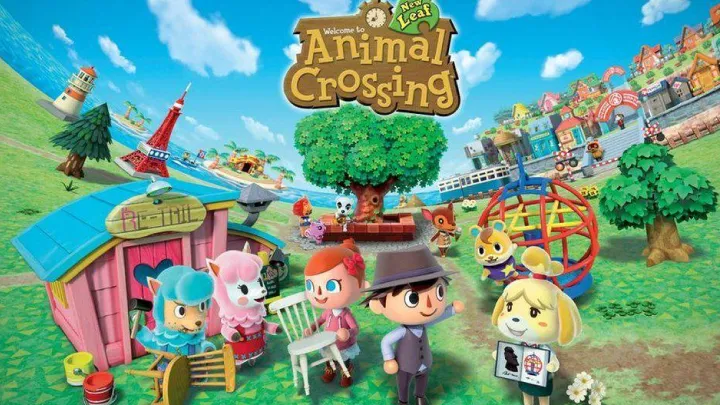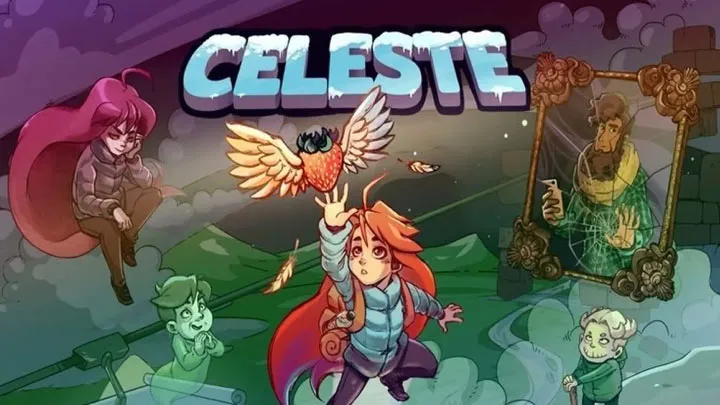Introduction
"Animal Crossing: New Horizons," developed by Nintendo, has captured the hearts of players worldwide since its release in March 2020. This life simulation game allows players to escape to a deserted island paradise where they can engage in various activities such as fishing, bug catching, crafting, and building their dream home. The game's relaxing pace, charming characters, and extensive customization options make it an inviting experience for players of all ages. This guide provides essential tips and strategies to help both new and veteran players make the most of their time on their island, from starting out and managing resources to designing their ideal paradise and engaging with the community.
Getting Started
Creating Your Island
The journey begins with creating your unique island:
- Choosing Your Island Layout: When starting, you’ll have the opportunity to select your island's layout. Consider the terrain and water features, as these will affect how you plan your island later. Each layout offers different advantages, so pick one that excites you.
- Personalizing Your Character: After choosing your island, customize your character. You can select different hairstyles, skin tones, and outfits. Personalization helps you feel more connected to your character as you embark on your journey.
Understanding the Basics
Familiarizing yourself with the game’s mechanics is crucial:
- Daily Routine: Each day in Animal Crossing offers new opportunities and activities. Engage in tasks like gathering resources, visiting shops, and interacting with villagers. Creating a daily routine can optimize your time and ensure you don’t miss out on any seasonal events or special activities.
- Inventory Management: You have a limited inventory space, so it’s essential to manage it effectively. Regularly check your inventory to decide what to keep, sell, or store. Utilize storage in your house for items you want to keep but don’t need immediately.
Resource Management
Gathering Resources
Collecting resources is vital for crafting and building:
- Foraging and Collecting: Spend time gathering wood, stones, clay, and other materials by chopping trees and hitting rocks. These resources are crucial for crafting tools and furniture. Look for seasonal items like fruit and flowers as well, which can be used for crafting or selling.
- Fishing and Bug Catching: Equip a fishing rod or net to catch fish and bugs. Each month introduces new species, so be sure to catch them as they appear. This not only fills your museum but can also be sold for Bells, the in-game currency.
Crafting and DIY Recipes
Crafting is an essential part of the game:
- Collecting DIY Recipes: As you progress, you’ll find or receive DIY recipes for crafting furniture and tools. You can obtain recipes from bottles washed ashore, balloons, and villagers. Keep an eye out for new recipes to expand your crafting options.
- Crafting Tools and Furniture: Use gathered resources to craft tools and furniture. Prioritize crafting essential tools like axes, fishing rods, and shovels, as these will help you gather more resources efficiently.
Building Your Island
Designing Your Paradise
Your island is a blank canvas waiting for your creativity:
- Island Layout: Plan your island layout by placing buildings, bridges, and pathways strategically. Think about how you want areas like residential zones, shops, and recreational spaces to flow together. This will enhance the island’s aesthetic and functionality.
- Using Terrain Features: Take advantage of natural terrain features like rivers and cliffs. Incorporating these elements into your design can create beautiful vistas and unique areas for your villagers to enjoy.
Landscaping and Customization
Customization is key to creating a unique island:
- Pathways and Fencing: Use custom designs to create pathways that guide visitors around your island. Fencing can also define spaces and add charm to your design. Experiment with different materials and colors to find what suits your vision.
- Furniture Placement: When placing furniture outdoors, consider how it interacts with the environment. Create cozy seating areas or themed zones that reflect your style. Regularly rearranging furniture can keep your island feeling fresh.
Engaging with Villagers
Building Relationships
The villagers are a vital part of the Animal Crossing experience:
- Talking to Villagers: Spend time each day talking to your villagers. Engaging in conversations can strengthen your relationships and unlock unique dialogue. Villagers also provide quests and gifts, making interactions rewarding.
- Gifting: Giving gifts to your villagers can boost your friendship level. Pay attention to their preferences and give them items they like, such as clothing, furniture, or food. Building strong friendships can lead to special rewards and events.
Villager Events and Activities
Participating in villager activities can enhance your experience:
- Seasonal Events: Animal Crossing hosts various seasonal events, such as Halloween, Christmas, and Harvest Festival. Participate in these events to earn unique items and engage with your villagers in festive activities.
- Co-hosting Events: Occasionally, your villagers will host events or activities. Join in on their celebrations to strengthen your bonds and enjoy the vibrant community atmosphere.
Managing Your Finances
Earning Bells
Building wealth is essential for expanding your island:
- Selling Items: Regularly sell excess items, such as fish, bugs, and crafted furniture, to Timmy and Tommy at Nook’s Cranny. Be strategic about what to sell; some items fetch higher prices than others.
- Turnips and Stock Market: Engage in the turnip market by purchasing turnips from Daisy Mae on Sundays and selling them throughout the week. Prices fluctuate, so keep an eye on trends to maximize your profits.
Expanding Your Island
Investing in your island is crucial for growth:
- Paying Off Nook Miles Loans: As you expand your island, you’ll take out loans to build and upgrade buildings. Pay off these loans promptly to unlock new features and upgrades that enhance your gameplay experience.
- Building Bridges and Inclines: Use Bells to build bridges and inclines, making your island more accessible. This investment improves the flow of movement around your island and encourages exploration.
Customizing Your Experience
Custom Designs
Custom designs allow for personal expression:
- Creating Custom Patterns: Use the in-game design tools to create custom patterns for clothing, pathways, and decorations. This feature adds a unique touch to your island and allows you to showcase your creativity.
- Utilizing QR Codes: If you want to import designs from the community, you can use QR codes to access custom patterns created by other players. This can expand your design options significantly.
Changing the Atmosphere
The atmosphere of your island can be adjusted:
- Seasonal Decorations: Change your decorations based on the season. Use seasonal items to reflect the time of year, creating a festive atmosphere that keeps your island feeling lively and engaging.
- Lighting and Sound: Consider the placement of outdoor lighting and sound items. These can create a cozy ambiance, especially during the evening, and enhance the overall experience for you and your villagers.
Engaging with the Community
Joining Online Communities
Being part of the Animal Crossing community can enhance your experience:
- Forums and Social Media: Engage with fellow players on forums and social media platforms. Sharing tips, designs, and experiences can lead to valuable insights and connections.
- Participating in Events: Look for community events and challenges. Engaging in these activities can provide unique rewards and foster camaraderie among players.
Trading and Visiting Islands
Trading with others can lead to exciting opportunities:
- Visiting Friends’ Islands: Use online features to visit friends’ islands. This allows you to see their designs, trade items, and exchange ideas. It’s also a great way to get inspiration for your own island.
- Trading Items: Participate in trading with friends or community members. You can exchange items, DIY recipes, or even villagers, which enriches your gameplay experience and fosters connections.
Continuous Improvement
Analyzing Your Gameplay
Improvement comes from reflection and practice:
- Reviewing Your Island: Take time to walk around your island and assess what you like and what you want to change. Regularly reviewing your design choices can help you identify areas for improvement.
- Learning from Others: Watch videos or streams of other players to gather ideas and strategies. Learning from the community can provide new perspectives and inspire your creativity.
Setting Goals
Setting achievable goals can help you progress:
- Daily and Weekly Goals: Create daily and weekly goals for yourself, such as completing specific tasks, reaching certain friendship levels, or expanding your island’s infrastructure. This keeps gameplay engaging and focused.
- Long-Term Projects: Plan long-term projects, such as themed areas or complete island redesigns. Having a vision can motivate you to gather the necessary resources and commit to improving your island.
Conclusion
"Animal Crossing: New Horizons" offers a delightful and immersive experience that allows players to create their own paradise on a deserted island. By following the tips and strategies outlined in this guide, players can enhance their journey, engage with their villagers, and build a vibrant and personalized island. From mastering resource management and crafting to building relationships and participating in community events, every aspect of the game contributes to its charm and depth. Embrace the adventure, cultivate your island, and enjoy the simple pleasures of rural life in Animal Crossing, where every day brings new opportunities for creativity and connection.



















